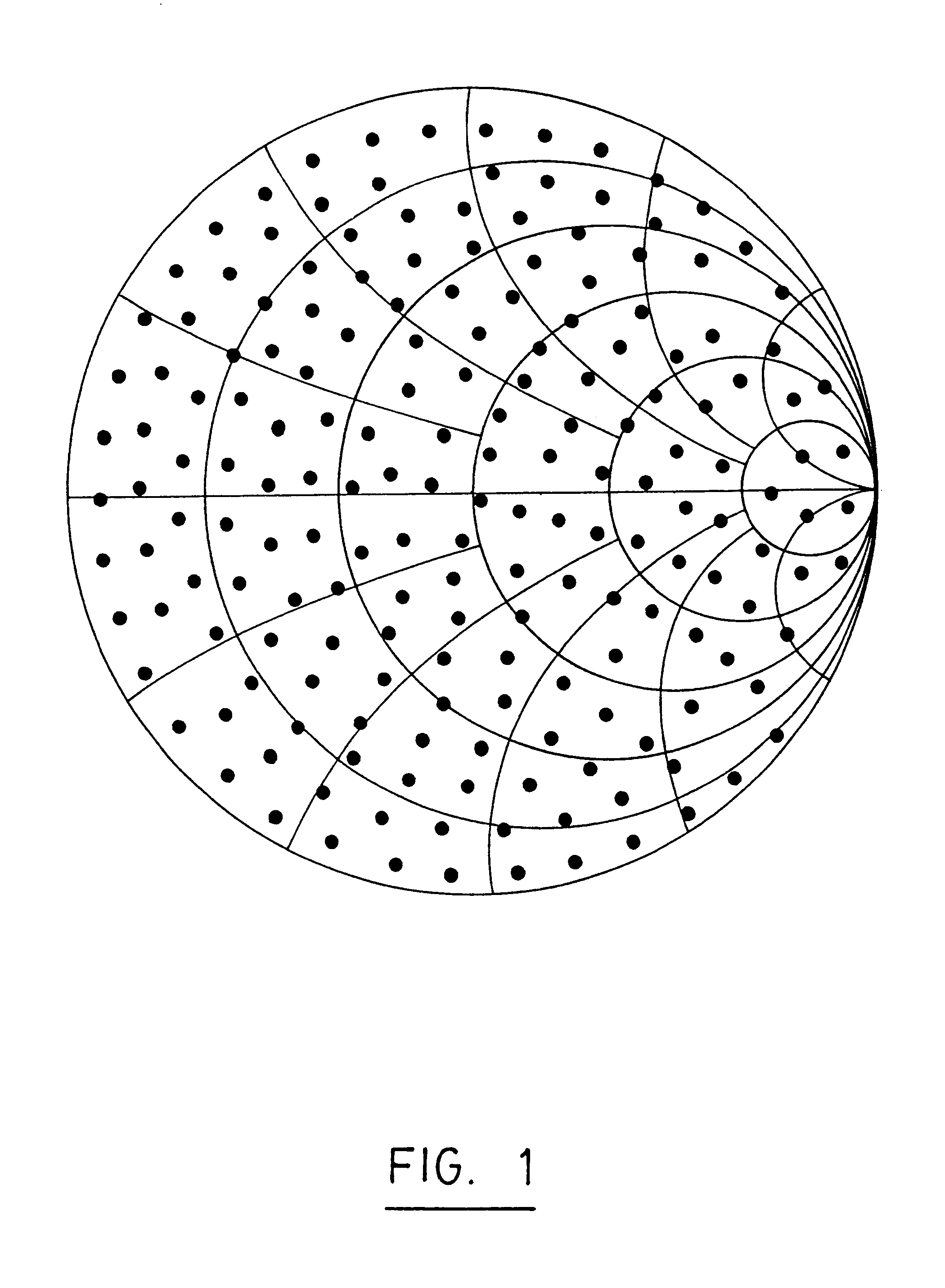Harmonic rejection load pull tuner
a load pull and tuner technology, applied in the field of rf/microwave tuners, can solve the problems of unsatisfactory phenomenon, power limitation of output amplifiers, and risk of parasitic oscillation
- Summary
- Abstract
- Description
- Claims
- Application Information
AI Technical Summary
Problems solved by technology
Method used
Image
Examples
Embodiment Construction
Referring now to FIGS. 7 to 11 the present invention concerns a harmonic rejection load pull tuner which effectively reflects at least one of the harmonic frequencies.
In general, the present invention concerns a harmonic rejection load pull tuner 20 comprising: a large-band tuner 21 having an input and an output; and means 23 for rejecting at least one harmonic frequency of a base frequency, these means 23 having an input and an output, the input being connected to an output of a device under test (DUT) 30 and the output being connected to the input of the large-band tuner 21. FIG. 7 shows a complete set-up for output characterisation, where the set-up further includes a RF / microwave generator 40 whose output is optionally connected to an amplifier 50. The amplifier 50 (if present) is connected to the DUT 30, which is then connected to the input of the means 23 for rejecting at least one harmonic frequency of a base frequency, followed by a large band tuner 21, whose output can be a...
PUM
 Login to View More
Login to View More Abstract
Description
Claims
Application Information
 Login to View More
Login to View More - R&D
- Intellectual Property
- Life Sciences
- Materials
- Tech Scout
- Unparalleled Data Quality
- Higher Quality Content
- 60% Fewer Hallucinations
Browse by: Latest US Patents, China's latest patents, Technical Efficacy Thesaurus, Application Domain, Technology Topic, Popular Technical Reports.
© 2025 PatSnap. All rights reserved.Legal|Privacy policy|Modern Slavery Act Transparency Statement|Sitemap|About US| Contact US: help@patsnap.com



